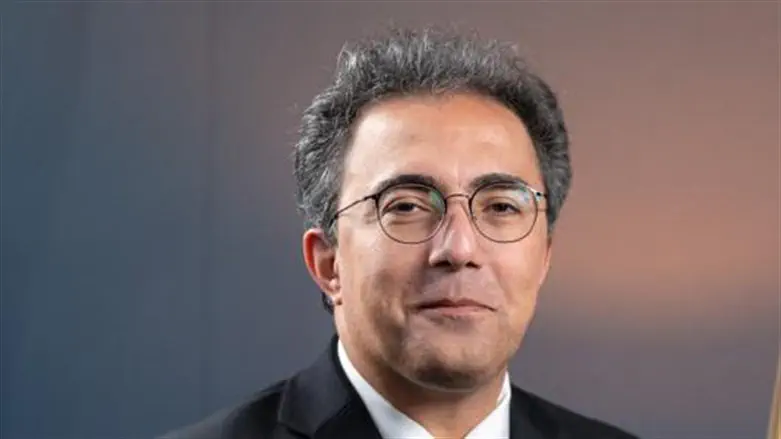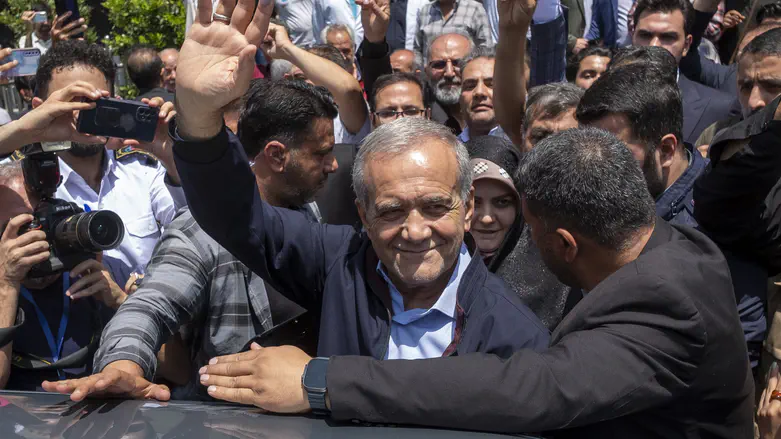
Erfan Fard is a counter-terrorism analyst and Middle East Studies researcher based in Washington, DC. an expert in Middle Eastern regional security affairs with a particular focus on Iran, Counter terrorism, IRGC, MOIS and Ethnic conflicts in MENA. He graduated in International Security Studies (London M. University, UK), and in International Relations (CSU-LA). He is fluent in Persian, Kurdish, Arabic and English. / Follow him in this twitter account @EQFARD.
In the shadow of a troubled legacy, Iran ushers in Masoud Pezeshkian as the new face of an old guard, a mere continuation of the Islamic Republic's enduring theocratic rule. Labeling Pezeshkian as a harbinger of change is both misleading and erroneous, merely a facade orchestrated by Ali Khamenei to maintain a grip on a nation teetering on the brink of socio-political upheaval.

1. The Illusion of Election Integrity
Masoud Pezeshkian’s rise to the presidency was anything but democratic. The recent electoral process was a tightly controlled spectacle, with the Khamenei ensuring only those loyal to the regime's foundational theocratic principles were in the running. The claim of a 70 percent voter turnout for Ebrahim Raisi in previous elections has been widely ridiculed as fictitious, a manufactured statistic to project a veneer of popular support.
2. A Puppet of the Regime
Pezeshkian, far from being a reformist, is undeniably another of Khamenei’s puppets, installed to placate international scrutiny while ensuring the continuation of the status quo. His presidency does not signify a shift in power but rather a strategic move to refresh the regime’s image in response to growing domestic discontent and international isolation.
3. Economic Despair and Mismanagement
Iran’s economy continues to languish under the weight of corruption, mismanagement, and stringent international sanctions. Pezeshkian’s vague promises of economic reforms are nothing more than rhetoric, unlikely to address the deep-seated issues of graft and economic inefficiency that plague the nation.
4. Suppression of Dissent
The regime’s response to civil unrest and public dissent has been brutal. The nationwide protests following the tragic death of Mahsa Amini are a testament to the regime’s fear of losing control. These protests were not quelled through reform or dialogue but through violence and repression, a clear message that the mullah’s regime will not tolerate opposition.
5. The Farce of Social Reforms
Any minor concessions on social issues like the mandatory hijab are merely superficial gestures that fail to address the systemic oppression embedded within the mullah’s outlaw regime. The state continues to enforce rigid control over personal freedoms, using such "reforms" as a smokescreen to distract from its authoritarian practices.
6. A Compromised Foreign Policy
Pezeshkian’s potential overtures towards renewing diplomacy with the United States and alleviating sanctions are likely to be ineffective. Iran’s foreign policy, deeply intertwined with the Khamenei’s vision, remains focused on expanding its nuclear capabilities and supporting regional terrorist militias, undermining any meaningful negotiation with Western powers.
7. The Role of the IRGC thugs
The IRGC (Islamic Revolutionary Guard Corps) continues to wield significant influence over Iran’s political landscape, ensuring that any presidential policy aligns with their strategic interests, which include maintaining regional hegemony and advancing nuclear ambitions.
8. Ineffectual International Stance
Despite Pezeshkian’s ostensibly moderate stance, Iran’s position on international issues like its opposition to Israel and its nuclear policy remains unchanged. These stances are likely to continue isolating Iran from much of the international community, exacerbating the country’s economic and diplomatic challenges.
9. The Reality of Voter Apathy
The low voter turnout is indicative of a broader disillusionment among the Iranian populace, who view the electoral process as neither free nor fair. This widespread public apathy undermines any claim of a legitimate mandate that Pezeshkian or the regime purports to have.
10. Continuation of a Theocratic Autocracy
Ultimately, Pezeshkian’s presidency is set to continue the trajectory of theocratic autocracy, with no genuine separation of powers or checks on the Supreme Leader’s authority. The systemic issues of governance, human rights abuses, and economic mismanagement are likely to persist, masked slightly by a facade of moderate reformism.
11. The Ineffectiveness of Supposed Reforms
The touted reforms under Pezeshkian are likely to be superficial at best. The regime’s track record suggests that any changes will be minimal and primarily aimed at appeasing international criticism rather than addressing the grievances of the Iranian people. This pseudo-reformist agenda serves only to perpetuate the regime's hold on power while offering negligible benefits to the populace.
12. The Plight of the Iranian People
The real losers in this political charade are the Iranian people, who continue to suffer under economic strain, social restrictions, and political repression. The regime’s ongoing prioritization of its survival over the welfare of its citizens ensures that true progress remains elusive, and the promise of reform under Pezeshkian is nothing more than a hollow echo of past disappointments.
In conclusion, Masoud Pezeshkian’s presidency is not a dawn of reform but a continuation of a deceitful narrative crafted by a regime desperate to maintain power at any cost. The international community and the Iranian people must see through this veneer of change and recognize the enduring authoritarianism that defines the Islamic Republic of Iran. The path to genuine reform in Iran is obstructed not by external pressures but by an entrenched leadership unwilling to relinquish its totalitarian control over the nation.